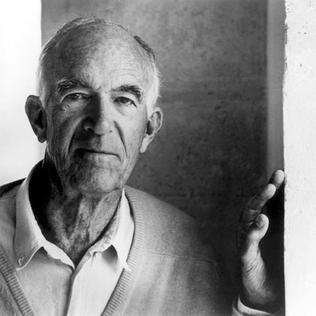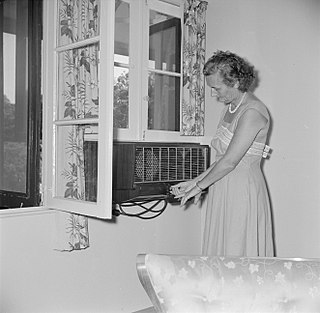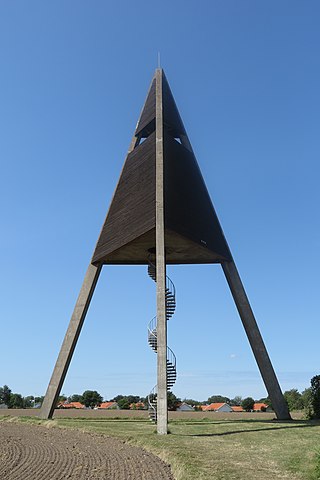This article has multiple issues. Please help improve it or discuss these issues on the talk page . (Learn how and when to remove these messages)
|
Steensen Varming is an engineering firm headquartered in Copenhagen, Denmark.
This article has multiple issues. Please help improve it or discuss these issues on the talk page . (Learn how and when to remove these messages)
|
Steensen Varming is an engineering firm headquartered in Copenhagen, Denmark.
It was founded by Niels Steensen and Jørgen Varming in Copenhagen, Denmark, in 1933. The firm specialised in civil, structural and building services engineering. During the 20th century, the practice grew out of Denmark and new offices were established in Australia (Steensen Varming Australia ‐ 1973), United Kingdom (Steensen Varming Mulcahy ‐ 1957) and Ireland (Varming Mulcahy Reilly Associates ‐ 1947). [1]
Jørgen Varming was the son of a prominent Danish architect, Kristoffer Varming; Jørgen studied engineering at the University of Newcastle. [2]
Steensen and Varming were chosen by the Danish architect Jørn Utzon as the mechanical consulting engineers for the Sydney Opera House in Sydney in 1957. The Australian branch of Steensen & Varming Australia (later to be known as Steensen Varming) was led by Vagn Prestmark a partner from the Danish Steensen & Varming firm. [3] [4]
Prestmark established Steensen Varming in Australia in 1957 and the company was permanently established in Australia in 1973. [5] Steensen & Varming was not well known in Australia prior to the Sydney Opera House, it was however well established in Europe with offices in Dublin, Belfast, London, Edinburgh and Copenhagen and employed over 500 people by 1973. [6]
When Utzon resigned from the Sydney Opera House in 1966, Steensen & Varming continued as the mechanical consultants ultimately delivering the design, documentation, contract administration and detailed site supervision of all mechanical, hydraulic and fire protection services, including the controls and supervisory system.
Steensen Varming's most known contribution to the Sydney Opera House, was the design for the water heat pump system. The architects and engineers agreed that constructing a boiler chimney stack or a cooling tower, would not be in keeping with the design of the Opera House, which ruled out the two normal approaches for large-scale air conditioning. Steensen Varming provided the design solution in using a heat pump system, which used water from the harbour as the cooling agent. [5]
There were three main considerations which led to the design of the Opera House air conditioning as a heat pump system, the availability of the waters of Sydney harbour as a heat sources and sink, the aesthetics and the savings that could be achieved with a water-to-water heat pump. Three pumps draw water from Circular Quay, the water is filtered to remove debris and then passes through tubes and is discharged into the harbour at the opposite side of the Opera House. Fresh water circulates between the heat exchanger shells and the shells of the condenser and evaporators of three centrifugal chillers / heat pump sets. [7]
The design innovation and technical expertise demonstrated in this landmark project subsequently led to the awarding of other projects in Australia to the Steensen Varming practice. [5]
The engineering construction of the Sydney Opera House was featured in a National Geographic/BBC production hosted Richard Hammond called Engineering Connections. The programme aired in Australia on 13 March 2010. Part of the documentary featured the seawater heat rejection system originally designed by Steensen Varming and assistance on this documentary was provided by Steensen Varming who acted as technical liaison to the production team. [8]
Steensen Varming was the first Australian organisation to win an Award of Excellence from the International Association of Lighting Designers for the lighting of the Ian Thorpe Aquatic Centre, Sydney. The Ian Thorpe Aquatic Centre was one of the last architectural designs by the architect Harry Seidler and was completed in 2008. [9]
The Sydney Mint was recently named as one of 30 projects that have reshaped the built environment since 1978. "The refurbishment project is an example of the Integration of services systems (by Steensen Varming), to provide a modern, functional headquarters while minimising the impact on the heritage and archaeological fabric of a site." [10]

The Sydney Opera House is a multi-venue performing arts centre in Sydney, New South Wales, Australia. Located on the foreshore of Sydney Harbour, it is widely regarded as one of the world's most famous and distinctive buildings, and a masterpiece of 20th-century architecture.

Jørn Oberg Utzon was a Danish architect. In 1957, he won an international design competition for his design of the Sydney Opera House in Australia. Utzon's revised design, which he completed in 1961, was the basis for the landmark, although it was not completed until 1973.

Heating, ventilation, and air conditioning (HVAC) is the use of various technologies to control the temperature, humidity, and purity of the air in an enclosed space. Its goal is to provide thermal comfort and acceptable indoor air quality. HVAC system design is a subdiscipline of mechanical engineering, based on the principles of thermodynamics, fluid mechanics, and heat transfer. "Refrigeration" is sometimes added to the field's abbreviation as HVAC&R or HVACR, or "ventilation" is dropped, as in HACR.

A heat pump is a device that consumes energy to transfer heat from a cold heat sink to a hot heat sink. Specifically, the heat pump transfers thermal energy using a refrigeration cycle, cooling the cool space and warming the warm space. In cold weather, a heat pump can move heat from the cool outdoors to warm a house ; the pump may also be designed to move heat from the house to the warmer outdoors in warm weather. As they transfer heat rather than generating heat, they are more energy-efficient than other ways of heating or cooling a home.

An absorption refrigerator is a refrigerator that uses a heat source to provide the energy needed to drive the cooling process. Solar energy, burning a fossil fuel, waste heat from factories, and district heating systems are examples of heat sources that can be used. An absorption refrigerator uses two coolants: the first coolant performs evaporative cooling and then is absorbed into the second coolant; heat is needed to reset the two coolants to their initial states. Absorption refrigerators are commonly used in recreational vehicles (RVs), campers, and caravans because the heat required to power them can be provided by a propane fuel burner, by a low-voltage DC electric heater or by a mains-powered electric heater. Absorption refrigerators can also be used to air-condition buildings using the waste heat from a gas turbine or water heater in the building. Using waste heat from a gas turbine makes the turbine very efficient because it first produces electricity, then hot water, and finally, air-conditioning—trigeneration.
Renewable heat is an application of renewable energy referring to the generation of heat from renewable sources; for example, feeding radiators with water warmed by focused solar radiation rather than by a fossil fuel boiler. Renewable heat technologies include renewable biofuels, solar heating, geothermal heating, heat pumps and heat exchangers. Insulation is almost always an important factor in how renewable heating is implemented.

Vapour-compression refrigeration or vapor-compression refrigeration system (VCRS), in which the refrigerant undergoes phase changes, is one of the many refrigeration cycles and is the most widely used method for air conditioning of buildings and automobiles. It is also used in domestic and commercial refrigerators, large-scale warehouses for chilled or frozen storage of foods and meats, refrigerated trucks and railroad cars, and a host of other commercial and industrial services. Oil refineries, petrochemical and chemical processing plants, and natural gas processing plants are among the many types of industrial plants that often utilize large vapor-compression refrigeration systems. Cascade refrigeration systems may also be implemented using two compressors.

An air source heat pump (ASHP) is a heat pump that can absorb heat from air outside a building and release it inside; it uses the same vapor-compression refrigeration process and much the same equipment as an air conditioner, but in the opposite direction. ASHPs are the most common type of heat pump and, usually being smaller, tend to be used to heat individual houses or flats rather than blocks, districts or industrial processes.

Air conditioning, often abbreviated as A/C (US) or air con (UK), is the process of removing heat from an enclosed space to achieve a more comfortable interior temperature and in some cases also controlling the humidity of internal air. Air conditioning can be achieved using a mechanical 'air conditioner' or by other methods, including passive cooling and ventilative cooling. Air conditioning is a member of a family of systems and techniques that provide heating, ventilation, and air conditioning (HVAC). Heat pumps are similar in many ways to air conditioners, but use a reversing valve to allow them both to heat and to cool an enclosed space.

Thermodynamic heat pump cycles or refrigeration cycles are the conceptual and mathematical models for heat pump, air conditioning and refrigeration systems. A heat pump is a mechanical system that transmits heat from one location at a certain temperature to another location at a higher temperature. Thus a heat pump may be thought of as a "heater" if the objective is to warm the heat sink, or a "refrigerator" or “cooler” if the objective is to cool the heat source. The operating principles in both cases are the same; energy is used to move heat from a colder place to a warmer place.
Deep water source cooling (DWSC) or deep water air cooling is a form of air cooling for process and comfort space cooling which uses a large body of naturally cold water as a heat sink. It uses water at 4 to 10 degrees Celsius drawn from deep areas within lakes, oceans, aquifers or rivers, which is pumped through the one side of a heat exchanger. On the other side of the heat exchanger, cooled water is produced.
HVAC is a major sub discipline of mechanical engineering. The goal of HVAC design is to balance indoor environmental comfort with other factors such as installation cost, ease of maintenance, and energy efficiency. The discipline of HVAC includes a large number of specialized terms and acronyms, many of which are summarized in this glossary.
Adrian Carter is an English architect, associate professor at the Department of Architecture and Design at Aalborg University, Denmark and Director of the Utzon Research Center in Aalborg. Carter also teaches at the Aarhus School of Architecture, Århus, Denmark. Under the auspices of Aalborg University, Adrian Carter initiated and established the Utzon Center and became its first director. The Utzon Center building on the Aalborg harbourfront was designed by Jørn Utzon in conjunction with his architect son Kim Utzon¹s office and opened to the public in May 2008.

Utzon's House in Hellebæk is a one-storey private home in Hellebæk, not far from Helsingør, in Denmark's northern Zealand. Built by the world-famous architect Jørn Utzon for his family and himself in 1952, its innovative design was welcomed by the world of architecture.

The Svaneke water tower, in the small town of Svaneke on the Danish island of Bornholm, was designed by award-winning architect Jørn Utzon and completed in 1952. It was the first successful project of the architect who would later design the Sydney Opera House.
Jan Utzon is a Danish architect. The son of Jørn Utzon, with whom he worked closely on several prestigious projects, he has completed a number of fine works of his own including the Performing Arts Centre in Esbjerg.
The Melli Bank, University of Tehran Branch, was designed by Danish architect Jørn Utzon, famed for his Sydney Opera House. The three-storey rectangular building on Enghelab Street near the centre of Tehran, Iran, was completed in 1962.
A bibliography of books and material related to the Architecture of Denmark:
Lin Utzon is a Danish designer who has created a wide variety of abstract decorative works from textiles to ceramics both in Denmark and abroad.

Peter Brian Hall was an Australian architect active in Sydney and elsewhere from the 1950s to the early 1990s. Schooled in the tenets of modernism his practice was also informed by a strong sense of the importance of function and context in design. During his early years Hall was the recipient of numerous education scholarships and bursaries, most notably a traineeship and then employment with the office of the New South Wales Government Architect, a source of highly creative architecture during the 1960s. However, Hall is best known for completing the Sydney Opera House after the resignation of its original architect, Jørn Utzon, in February 1966. At the age of 34, he was invited by the Government Architect to act as design architect in the newly formed consortium Hall Todd & Littlemore to resolve the issues which had led to Utzon's resignation, principally the design of all the interiors and the enclosing glass walls of the unfinished building. The Opera House opened in October 1973 and despite its subsequent success as Sydney's most popular performance venue, understanding of the work of Hall and his team has been coloured by the controversial circumstances of their appointment. For Hall, both personally and professionally, Utzon's legacy was a poisoned chalice – an unprecedented challenge to complete the building to a standard commensurate with its sublime exterior, but one that brought little recognition during his lifetime.